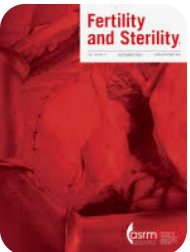Hsin-Hong Kuo, Cindy Hsuan Weng, Amruta Jaiswal, Kai-Yun Wu, Chin-Jung Wang, Chyi-Long Lee, Chih-Feng Yen
Abstract
Objective: To demonstrate an innovative idea for a four-petal method for performing laparoscopic adenomyomectomy on a patient with focal-type adenomyosis.
Design: A step-by-step explanation of the technique with narrated video footage.
Setting: University hospital.
Patient(s): A 38-year-old female with a 7 × 4 cm adenomyoma at the anterior uterine wall.
Intervention(s): Laparoscopic adenomyomectomy began with a cruciate incision to turn the adenomyoma into the shape of a blooming four-petal flower to fully expose the tumor and maximize the removal of adenomyotic tissue. During excision of the lesion, around a 1 cm thickness of the myometrium was preserved at the subendometrial region and around a 0.5 cm thickness of the serosa flap was also left in each "petal." Suture repair in the method introduced is different from closing the wound by approximation of myometrium to myometrium as in traditional myomectomy; instead, herein we repaired the adenomyomectomy wound by anchoring the serosal flap to the subendometrial tissue, with care taken to avoid dead space.
Main outcome measure(s): Subjective clinical symptoms as well as serial ultrasonographic measurement of the uterine size, shape, and wall thickness.
Result(s): The specimen removed was 92 g in weight. The symptoms have dramatically decreased since the procedure and dysmenorrhea improved from visual analog scale 8 to 1 postoperatively. Besides achieving satisfactory symptomatic relief, the ultrasonographic measurement of the myometrium was of adequate thickness (2.3 cm) after the operation and did not increase in a serial follow-up of 33 months.
Conclusion(s): The four-petal method of adenomyomectomy with cruciate incision offers full exposure to the localized adenomyosis. It greatly facilitates a balance between the maximized resection of the lesions and tailored reserves of myometrium. Subsequent repair by anchoring the serosal flap to the subendometrial tissue ensures adequate thickness of the uterine wall after the operation.
Keywords: Adenomyomectomy; adenomyosis; cruciate incision; four-petal method; laparoscopy.
Fertil Steril. 2020 Dec;114(6):1352-1354. doi: 10.1016/j.fertnstert.2020.07.032. Epub 2020 Sep 14. PMID: 32943225.




